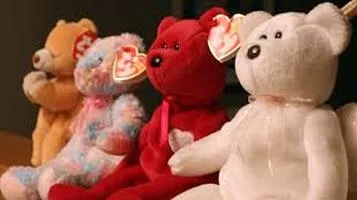The Nostalgic Allure and Evolution of Beanie Babies
Beanie Babies are a line of plush toys created by Ty Warner, the founder of Ty Inc., in 1993. These small, stuffed animals are uniquely filled with plastic pellets, or "beans," giving them a flexible and poseable quality. Each Beanie Baby features a distinct design, vibrant colors, and comes with a heart-shaped swing tag that includes a name, birth date, and a short poem. Initially marketed as inexpensive collectibles, they quickly became a cultural phenomenon in the 1990s, spiking in popularity as both toys and collectibles. The scarcity of certain limited-edition releases and retirements fueled a secondary market frenzy, with some rare editions fetching thousands of dollars. Their popularity declined in the early 2000s, but they remain iconic in the world of collectibles.

Introduction
Beanie Babies, the plush toys filled with plastic pellets (or "beans"), became a cultural phenomenon in the 1990s. Created by Ty Warner, these small, endearing collectibles sparked a frenzy unlike any other toy craze in history. For many, Beanie Babies weren't just toys; they were investments, status symbols, and objects of affection. This review will delve into the origins, rise to fame, and lasting impact of Beanie Babies, exploring both the positive and negative aspects of their legacy.
Origins and Design
Introduced by Ty Inc. in 1993, Beanie Babies were initially just another toy on the market. However, several factors set them apart from their peers. The unique design, characterized by their flexible and posable nature due to the bean filling, made them appealing to children and collectors alike. The initial lineup included nine characters, such as Legs the Frog and Spot the Dog, each with a name, birthday, and a short poem printed on the tag. This personal touch added a layer of charm and collectability.
The Marketing Genius
One of the most ingenious aspects of the Beanie Babies phenomenon was Ty Warner's marketing strategy. Unlike traditional toys that were mass-produced, Beanie Babies were released in limited quantities and retired regularly. This created a sense of urgency and scarcity, driving up demand and fueling a secondary market where prices could skyrocket. Collectors and enthusiasts scoured stores, attended conventions, and even engaged in heated online bidding wars to acquire rare and retired Beanie Babies.
The Economic Impact
At the height of their popularity, Beanie Babies were not just toys; they were investments. Stories of people paying exorbitant amounts for rare editions became commonplace. For a while, it seemed like everyone was trying to cash in on the craze. The secondary market boomed, with some rare Beanie Babies fetching thousands of dollars. However, like most speculative bubbles, this one eventually burst. The market became oversaturated, and prices plummeted, leaving many collectors with plush toys that were worth far less than they had paid.
Cultural Significance
Beanie Babies were more than just a fad; they were a cultural touchstone. They made appearances on major news networks, featured in magazines, and became a staple of 1990s pop culture. The toys also had a philanthropic angle, with Ty Inc. releasing special editions to raise money for various causes. For example, the Princess Diana bear was created to honor the late Princess and raise funds for her memorial fund. This blend of commerce and charity endeared the brand to a wide audience.
Criticisms and Controversies
Despite their popularity, Beanie Babies were not without controversy. The speculative nature of the market led to criticisms that the craze was exploitative. Some argued that Ty Warner's marketing tactics preyed on consumers' fear of missing out, leading people to spend beyond their means. Additionally, the sudden devaluation of Beanie Babies left many feeling duped. There were also issues related to counterfeit products flooding the market, causing further confusion and disappointment among collectors.
The Legacy
Today, Beanie Babies are often regarded with a sense of nostalgia. While they no longer command the high prices they once did, they remain a beloved part of many childhoods. The phenomenon also left a lasting impact on the toy industry, demonstrating the power of scarcity and marketing in driving consumer behavior. For Ty Inc., the success of Beanie Babies paved the way for other popular lines, such as Beanie Boos, which continue to enjoy success.
Conclusion
Beanie Babies were more than just a toy—they were a cultural phenomenon that captured the hearts and wallets of millions. Their rise and fall serve as a fascinating case study in marketing, consumer behavior, and the volatility of speculative markets. While they may no longer be the investment vehicles they once were, Beanie Babies have secured their place in history as one of the most iconic toys of the 1990s. Whether viewed as a savvy marketing triumph or a cautionary tale, there's no denying the lasting impact of these small, bean-filled plush toys on the world of collectibles and beyond.






